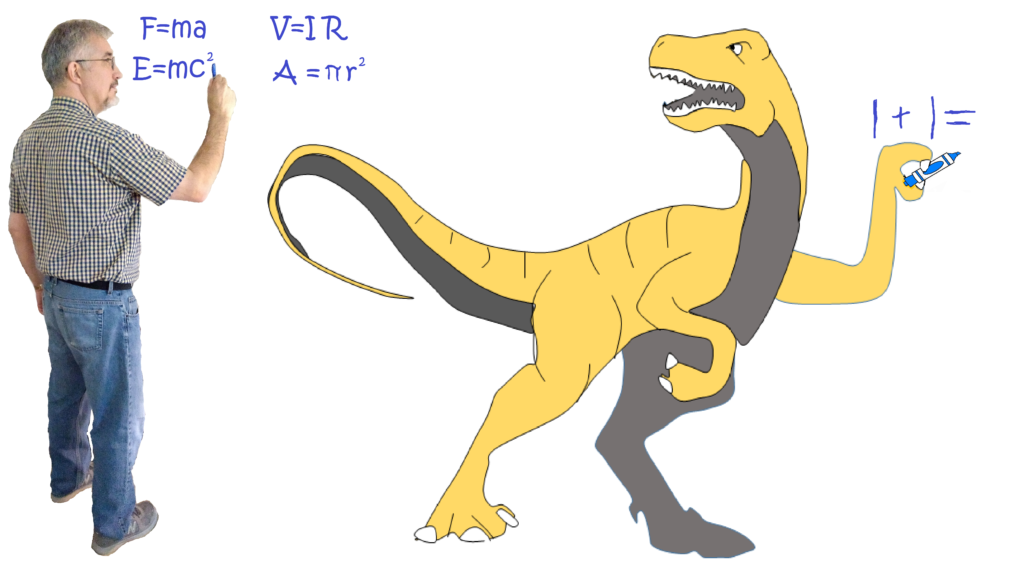You’re working hard, but not making progress toward your real writing goals. You just can’t seem to get to those tasks you know will help you write better in the long term.
The problem: your inner dinosaur is holding you back. I’ll tell you the way to outsmart the beast.

I’ll credit Al Pittampalli with the idea, though he wasn’t specifically discussing fiction writing. I’ll first summarize the content of his article, but I encourage you to read it here. It’s well worth reading, and Mr. Pittampalli writes in a compelling style using a wonderful driving simile.
Here’s the short version. True productivity isn’t getting more tasks done; it’s getting the important tasks done. You’re spending time in “Maintenance Activities,” those normal actions that seem urgent. You should work on “Growth Activities,” those tasks activities that would truly help you in the long term (education, extended projects, self-improvement) but require some effort now.
The reason you don’t get to your Growth Activities is that the dinosaur part of your brain (the primitive limbic part) sees them as a threat to your survival and overrules the prefrontal cortex (the rational part). The dinosaur takes over right at the moment of decision. Simple willpower won’t defeat it because the dinosaur is clever and relentless.
Two ways to combat the dinosaur are (1) implementation intentions (tasks expressed as if-then statements, linked to situational cues), which outwit the dinosaur for a while, and (2) the Grit Protocol (commitment to another person that you intend to keep your implementation intentions—reinforced by brief daily meetings). These commitments give the dinosaur a greater fear than the Growth Activity—admitting failure to keep a promise.
How does this apply to writing fiction? Let’s say your long-term goal is some variant of this: to write better fiction that sells well. During your Grit Protocol meeting with your partner, you’ll state that goal aloud. You’ll then list some Growth Activities that would move you toward your goal. Examples of Growth Activities include:
- Writing some number of words per day
- Participating in Nanowrimo
- Taking a course or workshop in fiction writing
- Doing writing exercises (not necessarily stories) that focus on improving known weak points
- Learning about marketing fiction
- Reading one or more books about writing fiction
- Reading some classic fiction or fiction in your genre and doing an analysis of why those books sell well.
So far, the dinosaur has prevented you from getting to tasks like these. The next step is to break your chosen growth activity into sub-tasks you could realistically accomplish in one day. Then turn those tasks into implementation intentions expressed as if-then statements with a triggering cue. Examples include:
- If the kids are in bed, then I’ll spend an hour writing
- If dinner is over, then I’ll write 1700 words without distraction toward my Nanowrimo goal
- If it’s my lunch break, then I’ll research upcoming nearby writing courses and select the best one for me.
- If I’m on my bus/subway/train commute, then I’ll write a setting description of that commute to improve my ability to set a scene.
- If I’m drinking my morning coffee, then I’ll scan some blogs about marketing fiction and make a list of marketing actions I should take.
- If I’ve just gotten into bed, then I’ll read another chapter of On Writing: A Memoir of the Craft by Stephen King.
- If I’m just sitting down at my home computer, then I’ll make a list of the things I liked most about that novel I just finished reading, and identify techniques the author used to entice me.
When the triggering cue occurs, execute the task you’ve chosen and to which you’ve committed yourself. Then report that success to your partner at the next day’s meeting.
You’re on your way to accomplishing your most important writing goals by outsmarting your inner dinosaur. Now, excuse me. I’m being reminded it’s time to eat by the dinosaur inside—
Poseidon’s Scribe
